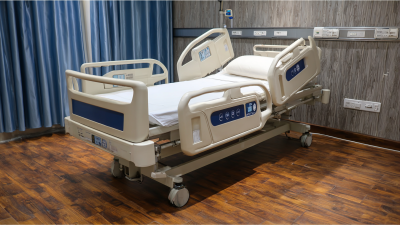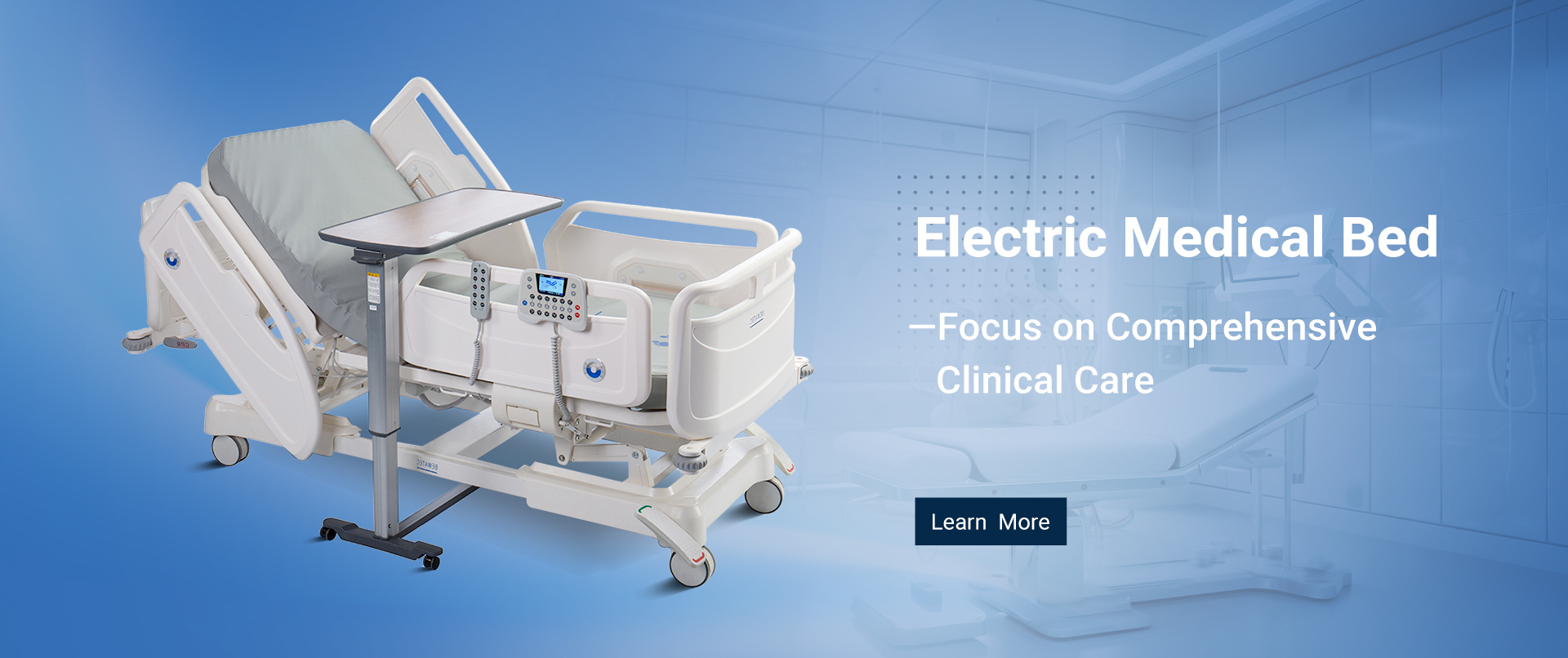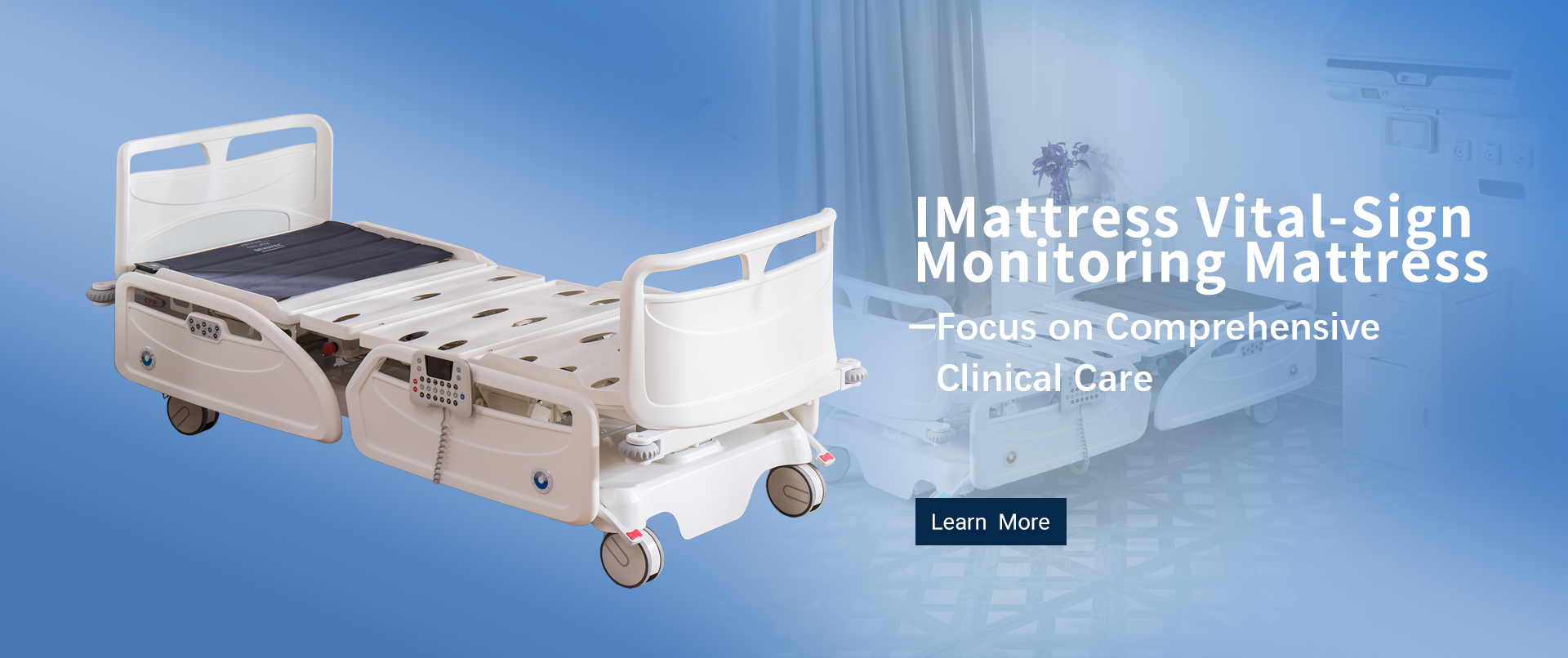
Choosing the Right Medical Bed: A Comprehensive Guide to Enhancing Patient Comfort and Care
Table of Contents
- Understanding the Different Types of Medical Beds: Features and Benefits
- Key Factors to Consider When Selecting a Medical Bed for Patient Needs
- Comparative Analysis of Conventional vs. Specialty Medical Beds
- Adjustable Medical Beds: Enhancing Comfort and Accessibility for Patients
- The Role of Technology in Modern Medical Bed Designs
- Maintaining and Caring for Medical Beds: Best Practices for Longevity
- FAQS
- Conclusion
- Related Posts
As healthcare continues to evolve, choosing the right medical bed is more important than ever. I mean, with the global medical device market expected to jump past $600 billion by 2024, the demand for smarter, patient-friendly solutions is booming. Bewatec (Zhejiang) Medical Device Co., Ltd. is really leading the charge here, focusing on innovative smart healthcare tech and bringing more digital tools into medical environments. Their goal? To make care more personalized and safer, whether folks are in hospitals or being cared for at home. Research shows that picking the correct bed can actually make a big difference—patients tend to stay in the hospital up to 30% less time and report greater satisfaction overall. So, knowing the different types of medical beds out there is super important for healthcare providers who want to improve patient outcomes and keep things safe and comfortable for everyone involved.

Understanding the Different Types of Medical Beds: Features and Benefits
When you're choosing a medical bed, it’s pretty important to understand the different types out there and what sets them apart. This way, you can better pick something that really suits the patient’s needs and feels comfortable. Typically, medical beds fall into three categories: manual, semi-electric, and fully electric. Each one serves a different purpose, depending on what’s needed. I read a report from Transparency Market Research recently—turns out, the global market for medical beds is expected to hit around 4.8 billion bucks by 2024. That just shows how much people are starting to realize that customized patient care makes a difference.
Manual beds are a bit more budget-friendly, but they do require caregivers to manually adjust the height and position, which can be a hassle—especially if the caregiver isn’t very mobile themselves. On the flip side, electric beds make things a lot easier because patients can often switch positions on their own with just a push of a button. Things like side rails, pressure-relief mattresses, and built-in scales make these beds even more practical. The WHO stresses that how comfortable a patient feels can really impact how quickly they recover, so picking the right bed isn’t just about clinical needs—it’s also about their comfort. Knowing the ins and outs of these features helps hospitals and care homes not just give top-notch treatment but also create a better overall experience for the people they’re caring for.

Key Factors to Consider When Selecting a Medical Bed for Patient Needs
When you're picking out a medical bed for a patient, there are a few key things you really wanna keep in mind to make sure they’re comfortable and well-cared for. First off, the bed’s adjustability is super important. You want a model that can be moved into different positions—like raising the head, lifting the legs, or just lying flat—because that really helps with patient comfort and makes treatments way easier. Also, think about how simple it is for caregivers to make those adjustments. Controls that are easy to use can save a lot of frustration and help staff do their job more smoothly.
Another big point to consider is the size and weight capacity of the bed. It should feel spacious enough so the patient isn't cramped, but also sturdy enough to handle different body sizes without any worries. Plus, adjustable height features are a bonus—they make it easier for folks to get in and out of bed, whether they’re patients or caregivers. And don't forget about the materials used. Choosing beds with hypoallergenic, breathable stuff for the mattress and frame can really boost hygiene and comfort, especially for long-term use. All in all, a good balance of these factors makes for a better, more practical choice.
Comparative Analysis of Conventional vs. Specialty Medical Beds
When you really think about patient comfort and overall care, choosing between a regular hospital bed and a specialty one is a pretty big deal. Sure, traditional beds are essential for basic needs, but honestly, they often lack those extra features that help make patients more comfortable and prevent issues that can pop up if someone’s stuck in the same position for too long. I came across a recent industry report that mentioned patients on specialty beds tend to feel way less discomfort and are less likely to develop pressure sores compared to folks on standard hospital beds. These specialized beds often come with fancy mattress tech—like pressure-relieving materials—that make a real difference in patient recovery and comfort.
Plus, a study from 2022 showed that using these kinds of beds can cut the risk of pressure ulcers by up to 30%. That’s pretty significant, especially in a hospital setting. They do a great job at distributing weight evenly and allowing for adjustable positioning, which is a big plus for patients who have mobility issues or are bed-bound. As healthcare keeps on evolving, it’s clear that investing in these innovative beds isn’t just about comfort—it's also about reducing costs in the long run by helping prevent complications tied to standard beds. Honestly, making this switch seems like a smart move for better patient outcomes and overall care.
Choosing the Right Medical Bed: A Comprehensive Guide to Enhancing Patient Comfort and Care
| Feature | Conventional Medical Beds | Specialty Medical Beds |
|---|---|---|
| Support Surface | Standard foam mattress | Pressure-relieving foam or air mattresses |
| Adjustability | Basic head and foot adjustments | Multiple electric adjustments for various positions |
| Mobility Features | Fixed frame | Integrated mobility aids (e.g., wheels) |
| Weight Capacity | Up to 350 lbs | Up to 600 lbs or more |
| Maintenance Requirements | Regular cleaning and replacement | Higher maintenance with specialized care |
| Cost Estimate | $1,000 - $2,500 | $2,500 - $10,000 |
| Ideal Use Case | Short-term care, basic needs | Long-term care, specialized medical needs |
Adjustable Medical Beds: Enhancing Comfort and Accessibility for Patients
 Adjustable medical beds are really changing the game when it comes to patient care. They've made things way more comfortable and accessible for folks who need to stay in bed for a long time—whether it's after surgery, dealing with chronic illnesses, or having mobility issues. The cool part? These beds are super easy to tweak. Staff can just raise or lower the head and foot sections to fit each patient's needs, which not only makes them feel more comfortable but also helps improve circulation and lowers the chance of developing bedsores.
Adjustable medical beds are really changing the game when it comes to patient care. They've made things way more comfortable and accessible for folks who need to stay in bed for a long time—whether it's after surgery, dealing with chronic illnesses, or having mobility issues. The cool part? These beds are super easy to tweak. Staff can just raise or lower the head and foot sections to fit each patient's needs, which not only makes them feel more comfortable but also helps improve circulation and lowers the chance of developing bedsores.
And it's not just about comfort — these beds pack some serious perks when it comes to independence. Features like side rails, built-in lifts, and remote controls give patients more control over their positions and help them get around a bit more on their own. That little bit of independence can really do wonders for their mental wellbeing, making them feel less dependent on staff for simple things. All in all, these beds don’t just help with clinical outcomes—they actually make the whole experience better for patients. For any medical facility wanting to offer top-notch care, investing in these beds is definitely a smart move.
The Role of Technology in Modern Medical Bed Designs
Today’s healthcare settings are really seeing how technology can make a difference, especially when it comes to medical beds. These days, beds come loaded with cool features like adjustable heights, tilt options, and pressure relief systems that respond to where the patient is and how they move around. Honestly, these upgrades not only make patients more comfortable but also help with recovery — for example, they lower the chances of pressure ulcers and encourage better blood flow.
Plus, the smart tech integrated into these beds totally changes the game when it comes to patient monitoring. Many beds now have sensors that keep tabs on vital signs and send alerts to caregivers if something’s off. That quick feedback means nurses and doctors can act fast, which often makes a big difference. And let’s not forget how easy these beds are to operate — the user-friendly interfaces let staff tweak settings without fuss, so they can really personalize care for each patient. All in all, tech-powered medical beds are a big step forward for creating a healthcare environment that’s more responsive, comfortable, and human-focused.
Patient Comfort and Care Factors in Modern Medical Bed Designs
Maintaining and Caring for Medical Beds: Best Practices for Longevity
Keeping medical beds in top shape is super important when it comes to making patients more comfortable and ensuring they get the best possible care. I know hospitals are constantly feeling the squeeze financially—reimbursement isn't always enough, and costs keep piling up. So, finding ways to make beds last longer isn’t just smart; it’s necessary. Regularly checking and maintaining beds helps them stay in good condition longer, and honestly, it’s the easiest way to keep patients safe and comfy. After all, quality care is what everyone’s really after, right?
**A few tips for doing this well:**
1. **Regular Checks**: Make it a habit to inspect beds often. Catching issues early—like wear or small malfunctions—can save a ton of trouble down the line and keeps everyone safe.
2. **Clean Carefully**: Sticking to proper cleaning routines that follow health standards is a no-brainer. It cuts down on infections and makes the environment feel welcoming for patients.
3. **Train Your Staff**: Investing in good training for your team on how to properly use and look after the beds makes a huge difference. When staff know what they’re doing, patient care getsbetter and more efficient.
And here’s a little game-changer—adding smart technology to these beds! Companies like ours are working on digital tools that can really boost how we monitor and care for patients. Smart features can make the beds more comfortable and help staff keep an eye on patients without much hassle, giving everyone a better shot at delivering top-notch healthcare even with all these current challenges.
FAQS
: Medical beds are generally categorized into manual, sem-electric, and fully electric models, each designed for specific patient needs.
Manual medical beds are cost-effective but require caregivers to adjust the bed height and position manually, which can be challenging for individuals with limited mobility.
Electric beds allow patients to adjust their position with minimal assistance, enhancing comfort and ease of operation.
The World Health Organization emphasizes that comfort significantly influences recovery times, making it vital to select beds that meet both clinical and personal preferences.
Specialty medical beds incorporate advanced features that enhance comfort and reduce the risk of complications like pressure sores, leading to lower discomfort levels for patients.
Specialty beds can lead to up to a 30% decrease in pressure ulcer formation by allowing better weight distribution and adjustable positioning.
Implementing innovative specialty medical beds may reduce the overall cost of care by minimizing complications related to standard bed use.
Features like side rails, pressure relief mattresses, and integrated scales can enhance overall functionality and patient care.
The global medical beds market is projected to reach 4.8 billion USD by 2024, indicating a growing recognition of customized patient care solutions.
Patients using specialty medical beds report significantly lower discomfort levels compared to those on standard hospital beds.
Conclusion
Picking the right medical bed is such a big deal when it comes to making sure patients are comfortable and well cared for. This guide is packed with info on different types of medical beds—what they feature, how they help, and what suits different patient needs. We also talk about what you should keep in mind when choosing a bed, like comparing traditional models to specialty beds. Adjustable beds get a special shoutout because they really boost accessibility for patients. Plus, with all the tech coming into play these days, bed designs are becoming smarter, making care more efficient and personal.
Taking good care of these beds is super important if you want them to last and perform well. Companies like Bewatec (Zhejiang) Medical Device Co., Ltd. are leading the way in this tech revolution, driving digital health solutions with a focus on giving patients a more personalized experience. At the end of the day, the right medical bed does more than just support physical health—it really helps lift the overall well-being of patients, you know?
Related Posts
-

Revolutionizing Patient Care: The Impact of Smart Medical Beds on Hospital Standards
-

Transforming Patient Care: The Ultimate Guide to Electric Medical Beds and Their Benefits
-

Unlocking Comfort: Benefits of the Best Patient Bed for Enhanced Recovery
-

Future Innovations in Best Hospital Equipment Bed for 2025 and Beyond
-

Unmatched Quality of Hospital Beds from Chinas Leading Factory Trusted Worldwide
-

7 Compelling Reasons to Choose a Patient Bed With Mattress for Optimal Comfort
Blog Tags:








